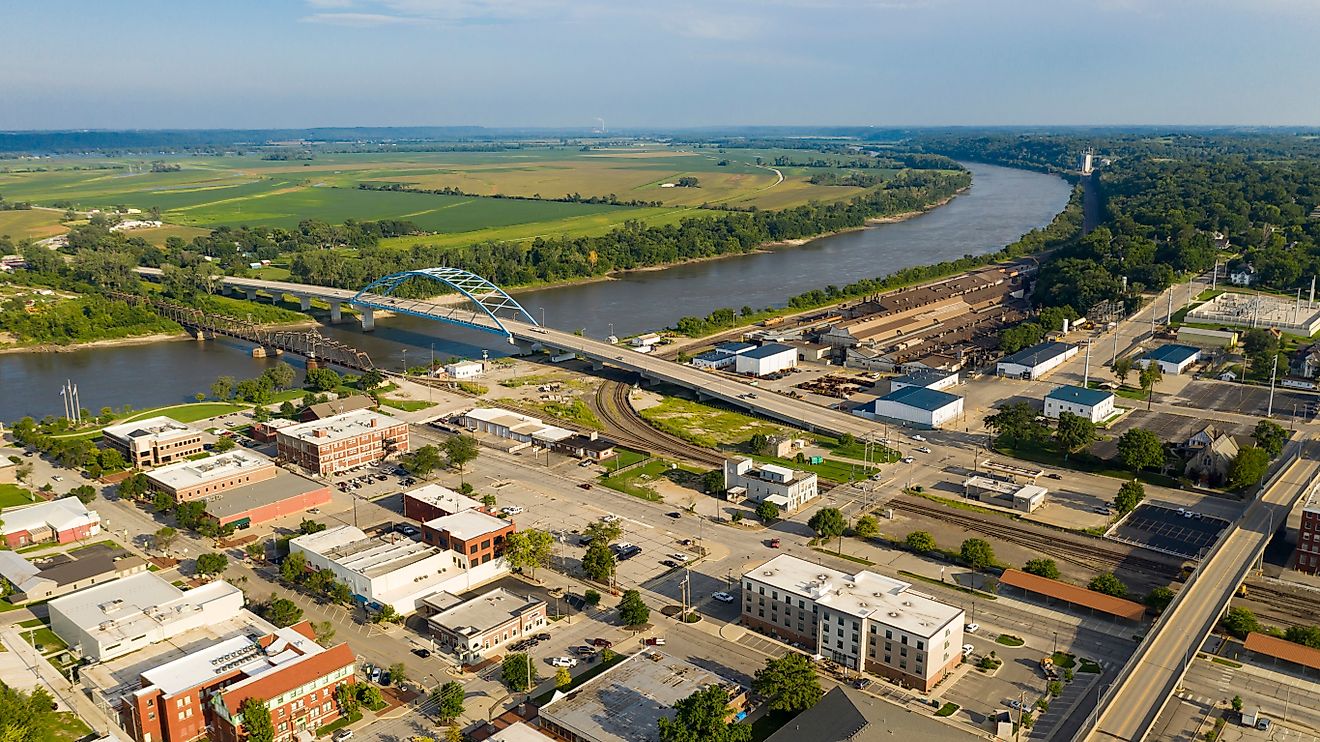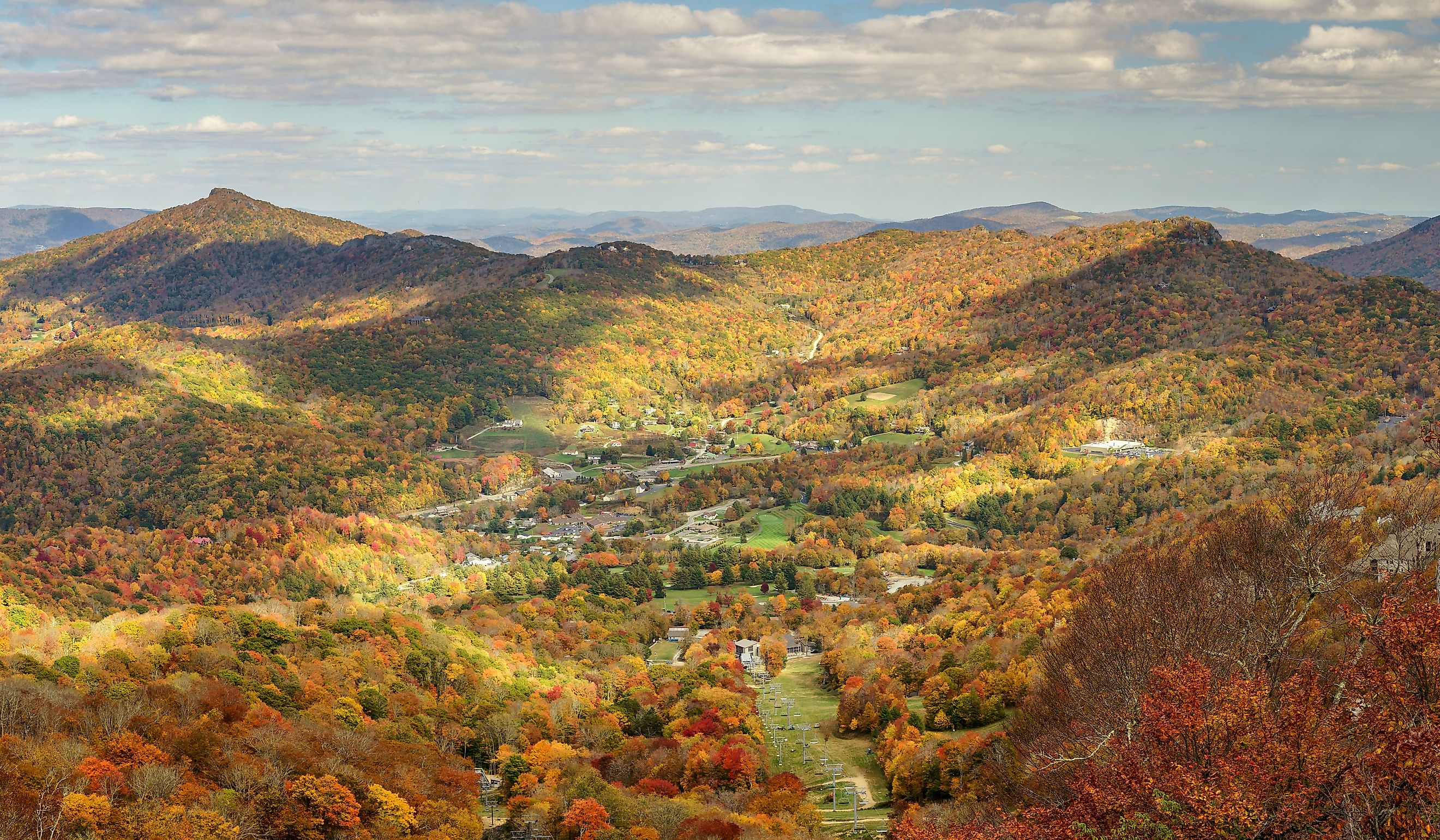
11 Secluded Towns in North Carolina
North Carolina is home to a variety of small, secluded towns that offer quiet escapes from the more populated areas of the state. Many of these towns are nestled in the mountains, along the coastline, or within forests. Each town has its unique historical background, shaped by industries like agriculture, mining, or railroads. These eleven secluded towns will give you the peaceful escape you've been looking for.
Blowing Rock
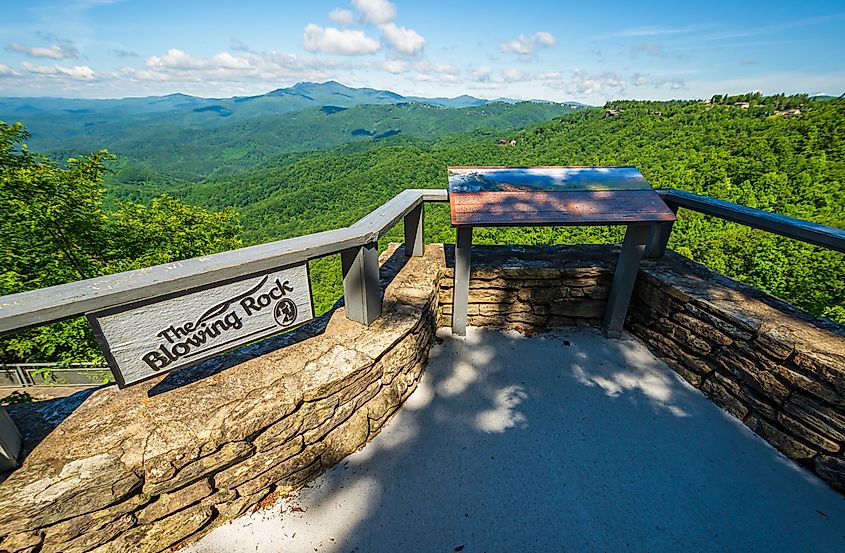
Blowing Rock is a small town located in the Blue Ridge Mountains of North Carolina, with a population of approximately 1,300 people. The town takes its name from a large rock formation nearby, which was historically significant to Native American tribes in the region. The town became a tourist destination in the late 19th century due to its cool mountain climate and scenic views. With the construction of the Blue Ridge Parkway, Blowing Rock saw an increase in visitors, solidifying its role as a mountain retreat.
Visitors to Blowing Rock can explore Moses H. Cone Memorial Park, which offers miles of trails for hiking and horseback riding. A visit to the actual Blowing Rock lets you learn about the local legend and enjoy panoramic views of the surrounding mountains. Glen Burney Trail, located close to downtown, leads hikers to waterfalls and is a quiet space for outdoor exploration.
Brevard
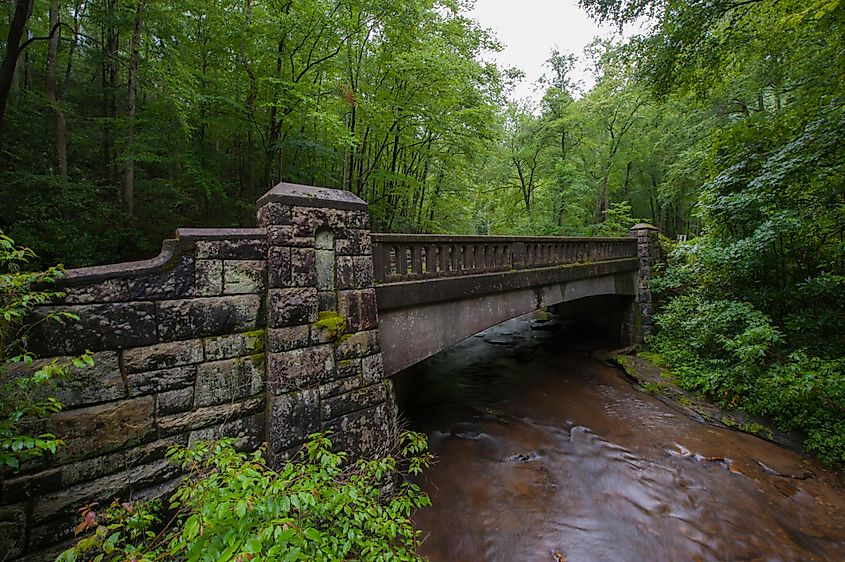
Brevard, located in Transylvania County, is known for its close proximity to Pisgah National Forest. The town was established in the mid-1800s and developed through the logging industry, taking advantage of the forests in the region. Over time, the town has transitioned into a hub for outdoor recreation, with its focus on environmental conservation and protecting the nearby forests.
While visiting Brevard, hike to the nearby Looking Glass Falls, a natural waterfall within Pisgah National Forest. Another option is to explore the Davidson River, where visitors can engage in activities such as fishing or swimming in natural pools. DuPont State Forest, located nearby, offers additional hiking trails and the chance to see waterfalls like Triple Falls and Hooker Falls.
Banner Elk
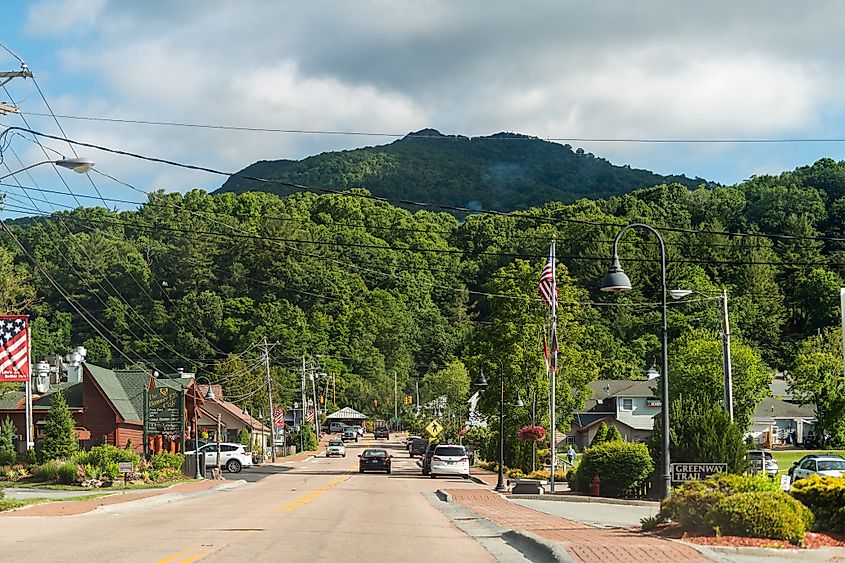
Banner Elk was originally established in the mid-19th century and has been a hub for agricultural activities, especially apple orchards. The presence of Lees-McRae College has also influenced the town's development, with the college playing a central role in the town’s growth. Banner Elk's location in the High Country has made it a well-known stop for visitors to the Appalachian Mountains.
The nearby Grandfather Mountain in Banner Elk has trails that vary in difficulty and provide views of the surrounding region. Another activity is visiting the Elk River Falls, a natural waterfall for swimming. The town also has access to the Blue Ridge Parkway, where visitors can take scenic drives and explore overlooks and trails along the historic roadway.
Tryon
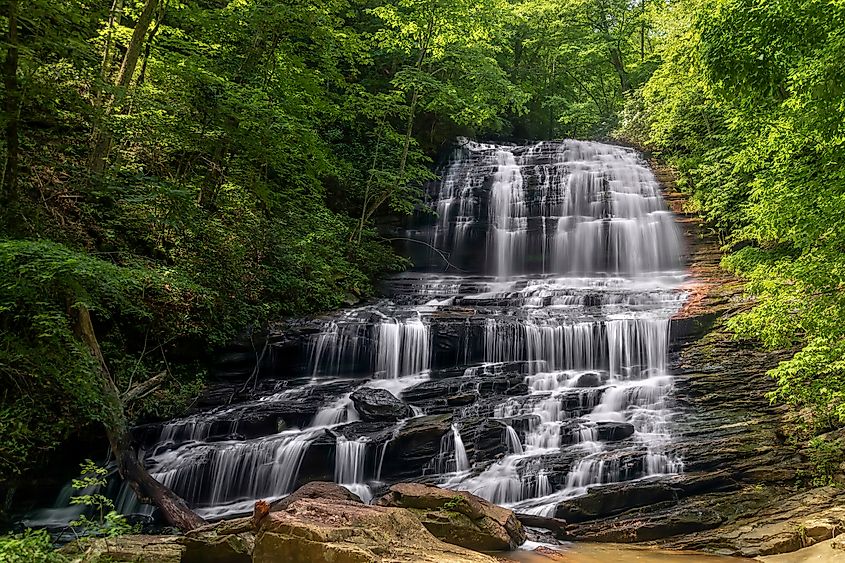
Tryon is located near the South Carolina border. It was originally established in the late 1800s and became known as a retreat for artists, writers, and equestrians. Over the years, it has maintained its quiet, artistic culture, with equestrian activities being a significant part of the town’s identity. The nearby Tryon International Equestrian Center has helped sustain the town’s reputation in the equestrian world.
While in Tyron, check out the nearby Pearson’s Falls Glen, where a short trail leads to a 90-foot waterfall. For those interested in local history, the Tryon Historical Museum has exhibits on the town’s development and its connection to the arts. Additionally, visitors can explore the Tryon Fine Arts Center to engage with local arts and cultural events throughout the year.
Burnsville
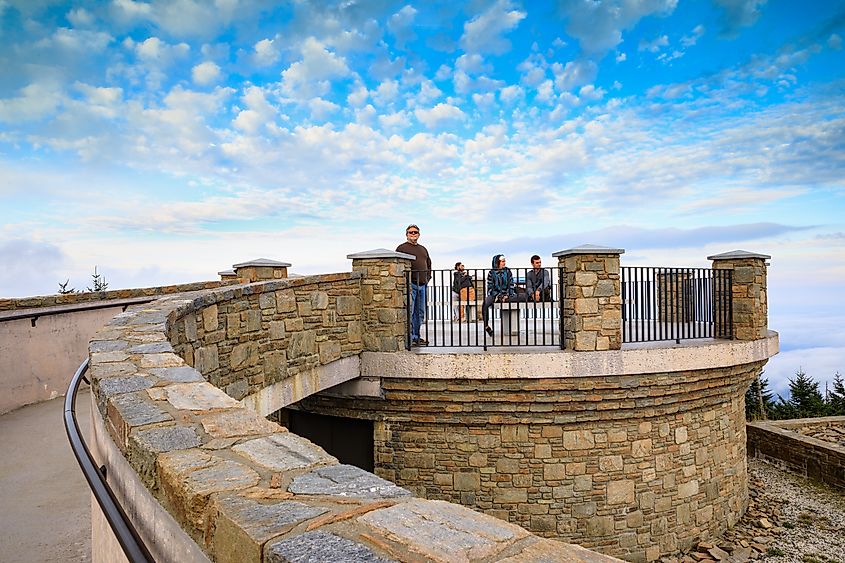
Burnsville was founded in the 1830s and developed as a center for agriculture and commerce in the region. It was named after Captain Otway Burns, a naval hero from the War of 1812. The town is known for its close proximity to Mount Mitchell, the highest peak in the eastern United States, and has become a gateway for visitors exploring the surrounding mountains.
The Mount Mitchell Trail is another recommended attraction. It leads to the summit of Mount Mitchell and has expansive views of the surrounding mountain range. The town also provides access to the Appalachian Trail, with several points nearby for those looking to experience hiking. Additionally, Burnsville is home to the Quilt Trails of Western North Carolina, where visitors can follow a trail of painted quilt squares displayed on barns and buildings throughout the area.
Hot Springs
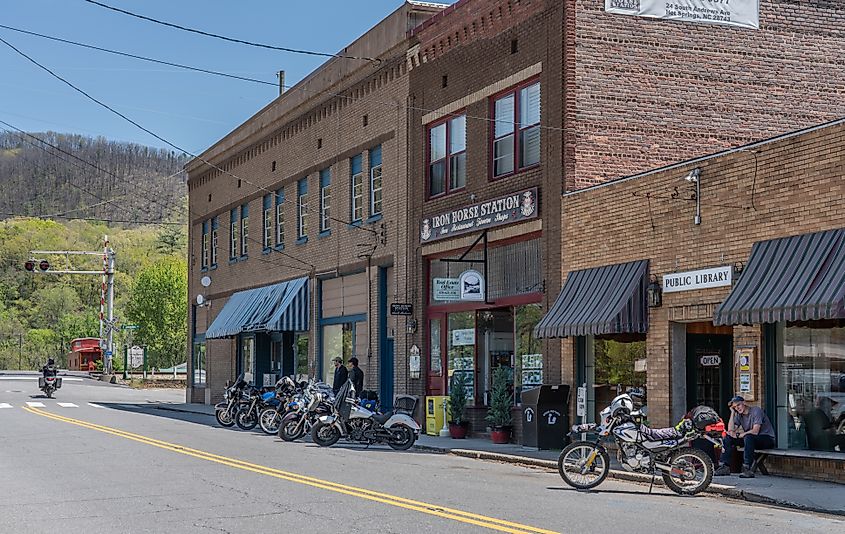
Hot Springs' name comes from the natural mineral springs that flow in the area, which were once a draw for visitors seeking their supposed healing properties. The town’s development was influenced by its location along the Appalachian Trail and the French Broad River, with outdoor recreation being a central part of its identity.
While in town, you have the change to hike sections of the Appalachian Trail, which passes directly through the town and provides access to scenic views of the surrounding mountains. The French Broad River offers activities such as rafting and fishing, with public access points near the town. For those seeking a more relaxed experience, the town’s natural hot springs remain accessible, offering a chance to soak in the springs.
Saluda
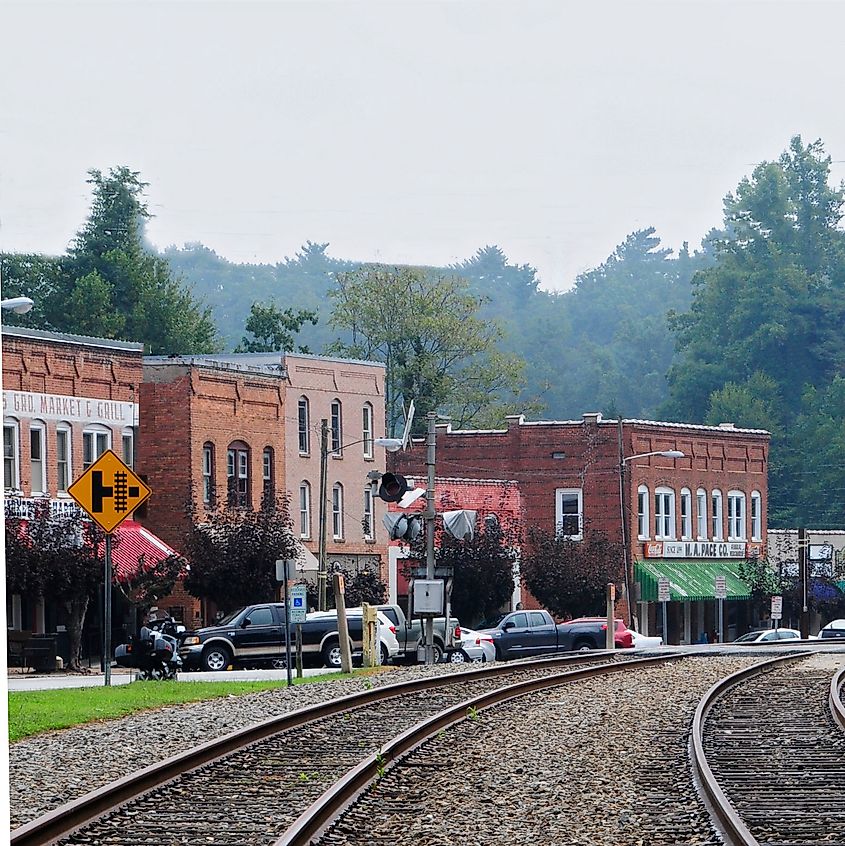
Saluda was established in the late 1800s as a railroad town, becoming known for the Saluda Grade, the steepest standard-gauge railroad grade in the United States. The town's development was closely tied to the railroad industry, though it has since become a quiet community known for its connection to the surrounding natural landscape.
The Green River Gorge in Saluda is where hiking and paddling are available. The nearby Bradley Nature Preserve has additional trails for those interested in exploring the region's forests. The town is also home to the Saluda Grade Trail, a developing rail trail that eventually follows the path of the historic railway line for additional hiking opportunities.
Dillsboro
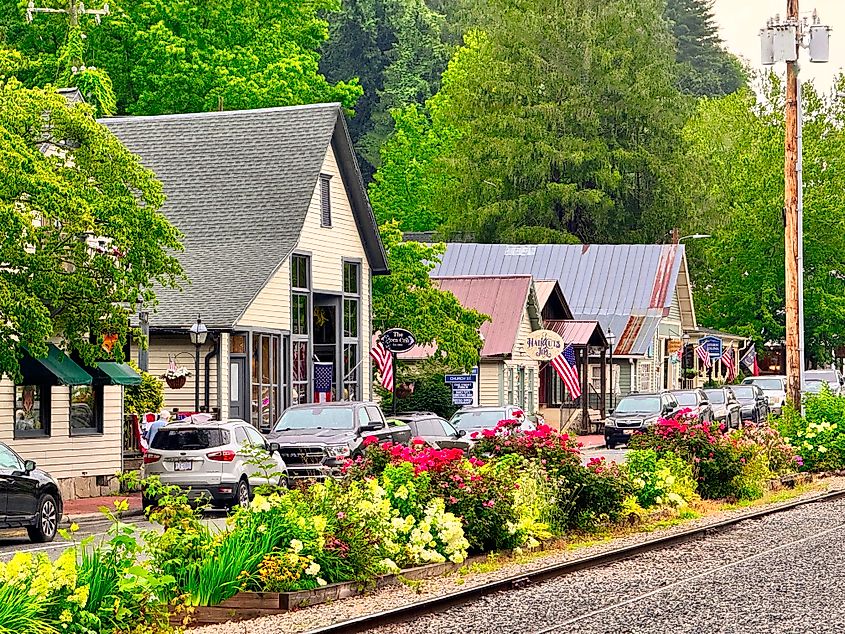
Dillsboro was founded in the late 19th century as a railroad stop and became known for its connection to the Great Smoky Mountains Railroad. The town’s history is closely tied to the railroad industry, though it has transitioned into a quiet community focused on preserving its heritage and natural surroundings.
You are sure to enjoy taking a walk along the Tuckasegee River in Dillsboro, where fishing and kayaking opportunities are available. The town also provides access to the Great Smoky Mountains National Park, where numerous hiking trails are available for exploration. Another option is to visit the nearby Judaculla Rock, a prehistoric petroglyph site that offers insight into the region’s Indigenous history.
Edenton
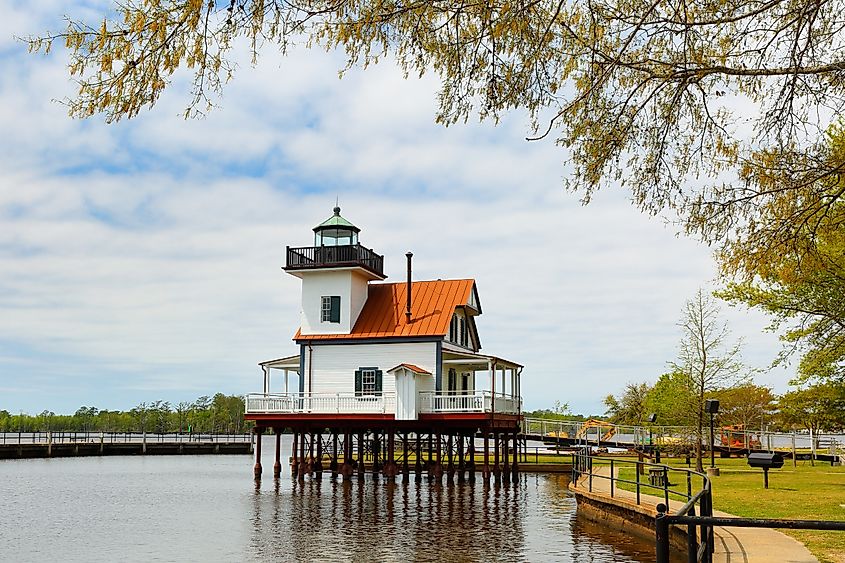
Edenton is located on the shores of the Albemarle Sound in Chowan County. Established in the 1700s, Edenton is one of the oldest towns in North Carolina. It developed as a colonial port town and played an important role in the state’s early history. The town is known for its well-preserved historic buildings, many of which date back to the 18th century.
Take a walking tour of the town’s historic district, where they can explore sites like the 1767 Chowan County Courthouse and the Edenton Cotton Mill Museum. Another option is to visit Edenton Bay, where the town’s maritime history is evident in the various structures and vessels along the waterfront. The nearby Albemarle Sounds is great for kayaking and exploring the natural beauty of the area.
Highlands
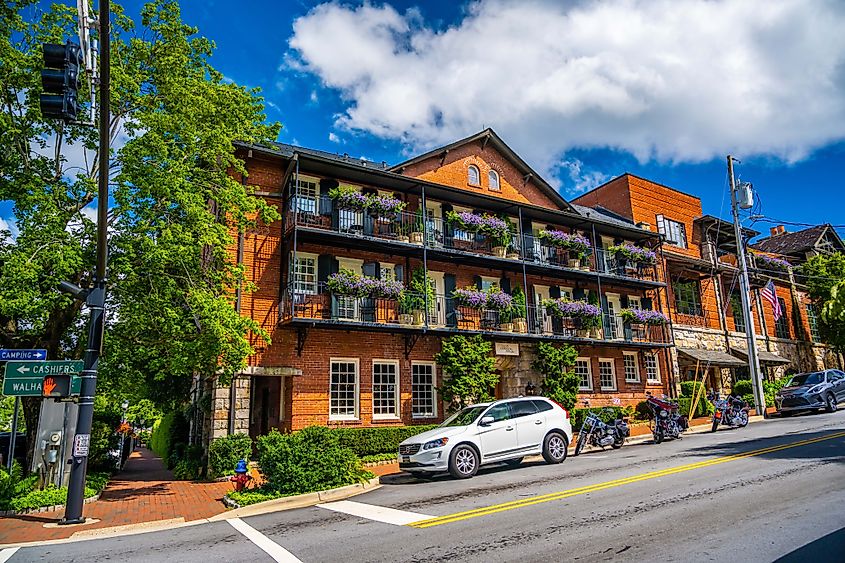
Highlands is a small town that was founded in the late 19th century by two developers who believed it would become a major crossroads for railroads. While that vision didn’t materialize, Highlands grew as a retreat for those seeking cooler temperatures during the summer. Its location on the Highlands-Cashiers Plateau in the southern Appalachian Mountains gives it a unique geographic position, surrounded by national forests.
You cannot visit Highlands without hiking the nearby Whiteside Mountain, which has trails leading to views of the surrounding forests and cliffs. The town also provides access to the Cullasaja River Gorge, where you can view waterfalls like Dry Falls and Bridal Veil Falls. In addition, Highlands Botanical Garden has trails through native plant habitats, a quiet experience for those interested in the region’s flora.
Little Switzerland
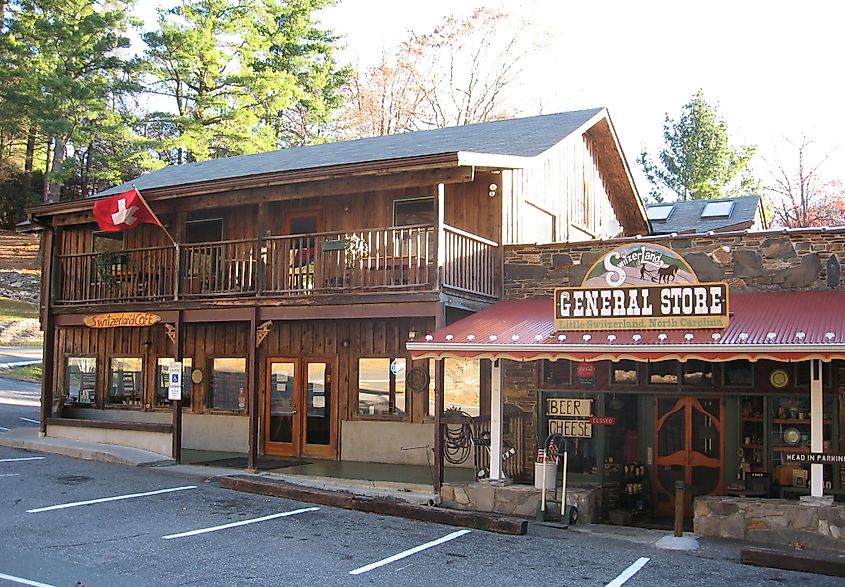
Little Switzerland is an unincorporated community of about 1,000 residents. The town was founded in the early 1900s by a North Carolina state senator who envisioned a mountain resort reminiscent of the Swiss Alps.
Little Switzerland is home to the Emerald Mine Trail, which has access to a former mining site and is an educational experience on the region’s mining history. The town is also a starting point for exploring sections of the Blue Ridge Parkway, where overlooks and walking trails are abundant. Another non-commercial activity includes visiting Grassy Creek Falls, a nearby waterfall that can be accessed through short hikes in the surrounding forest.
The secluded towns of North Carolina each offer a distinct experience shaped by their historical roots and surrounding natural landscapes. These towns provide visitors with opportunities to explore North Carolina’s history, whether through hiking trails, visiting historic sites, or engaging in local cultural activities—a reminder of North Carolina’s diverse heritage and connection to nature.








